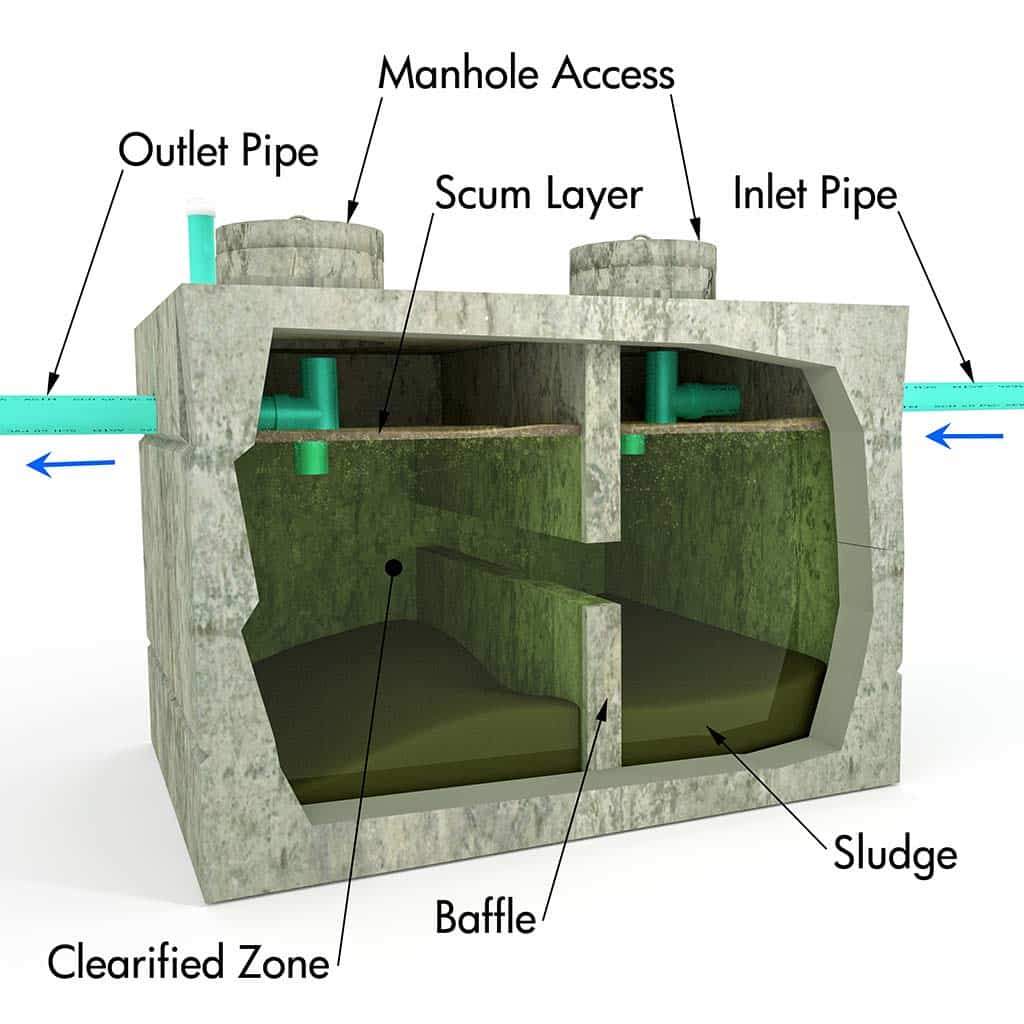Cesspits vs Septic Tanks – Unconfused!
Cesspits vs Septic Tanks – what is the difference? Frequently, when onsite wastewater systems are discussed, it’s not uncommon to hear several other closely related terms used interchangeably, such as Cesspits, Cesspools, Cesstanks and Septic Tanks. The first thing to realise is that Cesspools and Cesstanks may be lumped all together and called Cesspits – fundamentally, they are the same thing.

That then leaves the question of Cesspits versus Septic Tanks. They are both septic systems insofar as they receive wastewater discharges from properties. However, there’s a clear distinction between them.
Cesspits vs Septic Tanks – the Differences Between Them
Cesspits and Septic Tanks both operate to receive wastewater drained from properties from sinks, toilets, basins, showers, washing machines and other plumbing fixtures. However, it’s what happens after its removal where the differences emerge.
A Cesspit is merely a pit that stores wastewater. Waste enters the unit via an inlet pipe. It has no outlet drain pipe. Wastewater cannot then drain away from this pit or tank by any means other than by being pumped out.
Septic Tanks differ from Cesspits in that they digest the organic waste and allow the cleaner, purer effluent to safely discharge into the surrounding soil. The really big difference is that, compared to Cesspits, Septic Tanks need only to be pumped out very infrequently if given some basic care.
How Does a Cesspit Operate?
In short, a Cesspit is, literally, an underground chamber, normally with a cover and access to pump it out. It is simply designed to hold wastewater until it fills up to a level where it needs pumping out.
Cesspits are found rarely at domestic properties, but sometimes they are the only solution at locations with very poor or non-existent soil drainage. As the waste continues to build-up, with no means of escape, owners need to keep a check on waste levels and book regular pump-outs. As a result, many are fitted with alarms to notify owners when levels become excessively high.
A Cesspit will normally only be installed if there’s no alternative onsite wastewater solution, such as installing a septic tank or sewage treatment plant.
How Does a Septic Tank Operate?
Unlike Cesspits, Septic Tanks are designed to treat the wastewater that drains into them. The Septic Tank relies on bacteria to break down organic waste and digest it. The design of the tank ensures that most untreated waste remains within its chambers, so that only cleaner, purer effluent leaves the tank. This treated watery ‘effluent’ then flows into a soakaway, a system of underground perforated pipes where some bacterial activity continues and clean, safe water drains into the wider environment.
Providing you care for a Septic Tank properly, you won’t need to frequently pump out your waste. By flushing only natural organic waste and topping up with microbes, such as Muck Munchers, a Septic Tank can operate for years without needing to be pumped out.
In Summary
To reiterate that key difference, Cesspits are just holding tanks that need pumping out when full. Septic Tanks operate a continuous cycle, digesting waste and returning treated water to the environment, with little need for frequent pump-outs.










